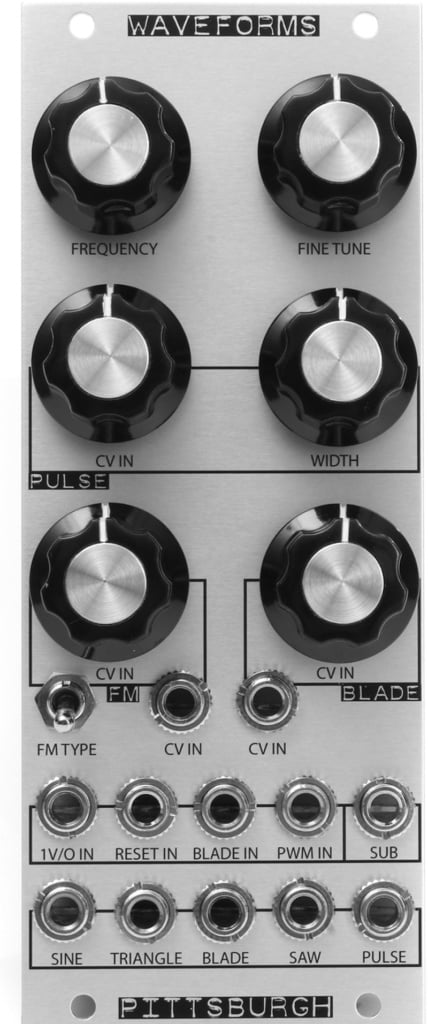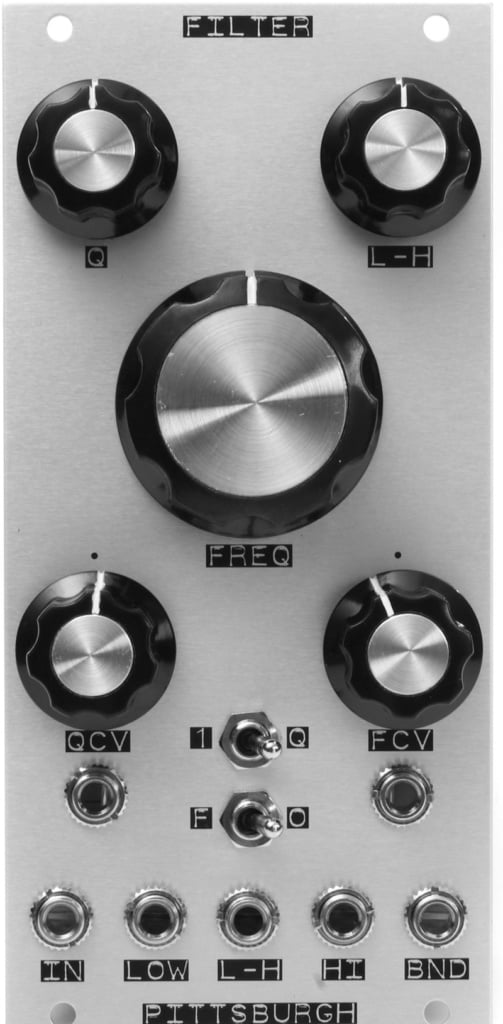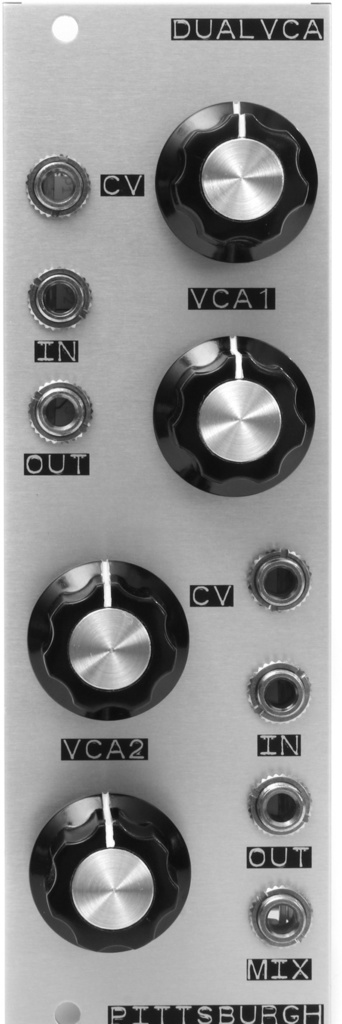Don’t panic. Modular synthesizers are not hard!
Synthesis is about texture and feeling. It is about creating soundscapes and moods that have never existed before. Building a new universe to explore. Modular synthesizers provide the tools to do this without restricting artists to a fixed voice architecture with limited or hidden signal path routing options. Taking advantage of the power to create new and unique sounds is not as complicated as it may seem. Modern modular synthesizers provide an amazing assortment of powerful synthesis tools that are easy to understand and explore if approached properly.
[RELATED: How to Build a Eurorack Modular System]
The patchable interface of a modular synthesizer allows for experimentation with many types of synthesis, but this article will use the more familiar East Coast style subtractive synthesis as an entry point into understanding and enjoying a modular synthesizer.
UNDERSTANDING SYNTH MODULES & CONTROL VOLTAGE
There are many different types of synthesizer modules available from an array of companies, each offering a unique take on a particular function. However, knowledge of the basics will translate to a general understanding any modular system. A Pittsburgh Modular filter may sound very different and offer a different set of controls compared to a Studio Electronics filter, but the process and basic signal path are identical. Understanding the signal flow of one will translate to a quick understanding of the other. Another example would be with oscillators. Almost all voltage controlled oscillators share a one-volt-per-octave pitch tracking input to precisely control the pitch of the oscillator, a waveform output, and one or more signal modulation inputs. Different oscillators will offer a unique take on these tools, but an understanding of the core functionality will carry from oscillator to oscillator.

Pittsburgh Modular LFO
The power behind a modular synthesizer comes from the use of patch cables to connect the different modules together. These wires carry two types of signals, audio and CV (control voltages). CV signals are used as a control source to automate module parameters. They can control the pitch of oscillators, modulate the cutoff of a filter, trigger an envelope, or manipulate any voltage controllable parameters available on the synthesizer. Different control voltages can be mixed together to create more complex modulations. Control voltage is a general term that can refer to a static DC voltage of an envelope or gate, the AC output of an LFO, or even audio rate signals from an oscillator. All these signals can be used in very musical ways as a modulation source.
[RELATED: 5 Things Every Synth Novice Should Know]
THE OSCILLATOR
The core of subtractive synthesis is the voltage controlled oscillator. Oscillators generate a continuous waveform, perfect for filtering and processing. Modular oscillators typically produce simultaneous output of multiple standard waveforms such as sine, triangle, saw and square waves. Various oscillators can offer additional waveforms like the Pittsburgh Modular blade wave, which is a unique modulatable saw wave. Control voltages can be used to modulate the frequency or pitch (FM), pulse width (PWM) of a square wave, and other types of wave shaping. The one-volt-per-octave input is the standard used to precisely control the pitch of the oscillator, allowing it to be played with a keyboard or other controller.

Pittsburgh Modular Oscillators
Multiple waveforms from one or more oscillators can be mixed together using a mixer module to create more complex timbres. Mixing a sine wave with a saw or square wave will fill out a sound. Blending waveforms from two oscillators together will add harmony or dissonance to the patch.
[RELATED: How to Record Analog Synthesizers Using a Modern Production Workflow]
TYPES OF FILTERS AND THE VCA
The modular scene is rich with interesting and esoteric filters to experiment with. Every filter offers a different sonic signature. Some sound warm and creamy while others sound big and brash and scream with resonance, yet they all fit into a few general categories: low pass, high pass, band pass, and notch. Low pass filters are the most common. A low pass filter works by rolling off the higher frequencies. A high pass filter is exactly the opposite. It rolls off the lower frequencies. A band pass filter rolls off both the low and high frequencies while a notch filter functions like an inverted band pass, removing only a small notch of the frequency range. Adding resonance and controlling the filter cutoff frequency and other parameters with control voltages allows for a limitless sonic palate.

Pittsburgh Modular Filter
The output of a filter is typically patched through a voltage controlled amplifier (VCA). This allows us to use a control voltage signal to control the volume of the sound. An envelope is usually used to shape a gate or trigger signal that is then patched into the control input of the VCA.
Everything mentioned above barely scratches the surface of modular synthesis, but hopefully it demystifies some of the terms and functionality. Learning synthesis is a slow process filled with experimentation and amazing sounding accidents. The best way to understand how a modular works is to start patching!

Pittsburgh Modular VCA
ABOUT THE AUTHOR
Richard Nicol, founder and chief designer of Pittsburgh Modular, sold the first Pittsburgh Modular Synthesizers module design, the VILFO, out of his basement to fund his crippling synthesizer addiction. Since then Nicol has somewhat obsessively worked to create meticulously designed, beautiful instruments, which are both accessible to beginning sound experimenters, as well as infinitely extendable for professional musicians and producers.
What do you think of this special guest article about modular synthesizers? Let us know in the comments below or drop a line on the Performer Magazine Facebook page or on Twitter @Performermag. And be sure to read more from the special Synth Issue of Performer Magazine.
